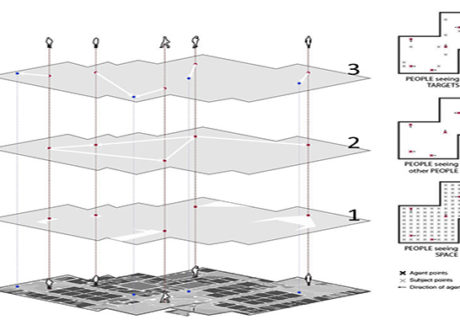
Who she is: Lisa Lim, PhD, began teaching while she pursued her doctorate at Georgia Institute of Technology, assisting Craig Zimring, director of SimTigrate Design Lab, on courses focusing on evidence-based design and the future of healthcare design. She joined Texas Tech’s College of Architecture in 2018, where she now teaches graduate and undergraduate design studios and elective courses as part of the design and health certificate programs—all while putting in plenty of time as researcher and designer, as well. Her primary focus is on providing healthy environments with an emphasis on building users, with courses exploring empirical and analytical approaches for understanding both space and the people in it.
Year in review: To help develop her students, Lim starts by providing them exposure to real-world environments where they can interact with healthcare professionals for a better understanding of users’ perspectives. Students talk to providers, ask questions, and receive feedback on their projects—a process that allows her curriculum to evolve based on emerging questions and topical issues. Furthermore, she establishes collaboration with healthcare design firms, allowing students the opportunity to visit projects, understand drivers, and realize the intent behind designs. However, it’s her advocacy for and involvement in research studies that truly stand out in the past year. Lim has focused her recent research efforts on the effect of healthcare facility design on the teamwork and well-being of healthcare professionals. For example, she collaborated with Mayo Clinic to investigate how the design and layout of a facility can support communication and awareness of healthcare professionals as well as its link to staff stress and burnout. With expertise in spatial analysis, she also developed a computer software called Visual Power that quantifies interpersonal visual relationships among users of a space, furthering analytical capabilities of the field. Additionally, she analyzed and evaluated various healthcare settings from the perspective of users by using what’s termed the “Functional Scenario analysis approach”that she developed with her colleagues. This method quantifies spatial affordance for the needs of users, such as patients, providers, or family members, in various healthcare settings, enabling evaluation and comparison of design options.
Industry impact: Lim spent the past year working to share the knowledge she’s gained, speaking about the results of the Functional Scenario analysis approach at several conferences and publishing results from her team-based care studies in peer-reviewed journals including Health Environment Research and Design, Health Care Management Review, and Journal of General Internal Medicine (it also informed Mayo Clinic’s own design guidelines). And in her core role as educator at Texas Tech, her students benefit from her rigor, as well. In addition to her courses, she also advises several undergraduate and graduate students who work with her as research assistants. Through these experiences, she teaches students the role of research in design and their role as a designer/researcher, providing valuable context to how they might solve similar industry challenges in the future.
from HCD Magazine https://ift.tt/2G23jVX
via IFTTT

No comments:
Post a Comment